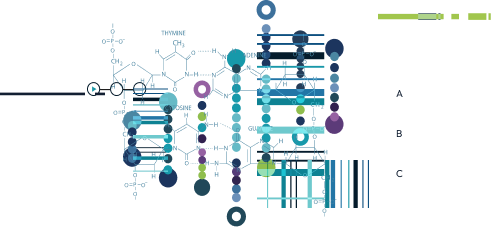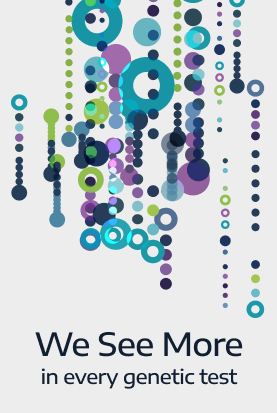News Center

Spotlight on inherited ataxias
- By Variantyx, Inc
- Posted in Clinical Education
In its most basic form, ataxia is a neurological symptom. It’s defined specifically as a lack of muscle control or coordination of voluntary movements that is not caused by muscle weakness. Instead, it is caused by damage to the nervous system, or by dysfunction linked to the nervous system – for example, the inner ear which is important for maintaining balance.
Ataxia also refers to a group of disorders that affect coordination and balance. Symptoms caused by ataxia include:
- Lack of coordination
- Stumbling or unsteady walking
- Difficulty performing fine motor skills (such as writing, eating)
- Difficulty swallowing
- Speech changes
- Uncontrolled eye movements
Ataxia can be acquired or genetic. Acquired ataxia has an external cause – there are many medical and neurological conditions that can cause ataxia to appear including stroke, viral infections, cancer, etc. Genetic ataxias are caused by mutations that result in the production of abnormal proteins. These abnormal proteins impact the function of nerve cells, particularly in the cerebellum and spinal cord, generally resulting in degeneration and progressive worsening of symptoms. Some cases of genetic ataxias are sporadic, arising through independent acquisition of a mutation, but most are inherited.
Diagnosis of inherited ataxias can be difficult. The first challenge is that many ataxias look clinically very similar. Plus ataxia can be a major clinical presentation in other rare genetic disorders. So it can be difficult to distinguish between different ataxias and ataxia-associated disorders based on clinical presentation alone. The second challenge is that ataxias and ataxia-associated disorders can be inherited through autosomal dominant, autosomal recessive, X-linked and mitochondrial mechanisms with many different genes affected.
The following table provides examples of inherited ataxias and rare genetic disorders where ataxia is a major clinical presentation:
| Ataxia/Ataxia-associated disorder | Inheritance | Gene(s) affected | Mutation type |
| Spinocerebellar ataxia | Autosomal dominant | ATXN1, ATXN2, ATNX3, ATXN7, plus others | CAG repeat expansion |
| Friedrich’s ataxia | Autosomal recessive | FXN | GAA repeat expansion |
| Ataxia-telangiectasia | Autosomal recessive | ATM | Small nucleotide change, del/dup |
| Wilson disease | Autosomal recessive | ATP7B | Small nucleotide change, del/dup |
| MELAS (Mitochondrial encephalomyopathy, lactic acidosis, and stroke-like episodes) | Mitochondrial | MT-ND1, MT-ND5, MT-TH, MT-TL1, MT-TV | Mitochondrial small nucleotide change, del/dup |
| FXTAS (Fragile X-associated tremor/ataxia syndrome) | X-linked | FMR1 | CGG repeat expansion |
| Ataxia/Ataxia-associated disorder | Inheritance | Gene(s) affected | Mutation type |
| Spinocerebellar ataxia | Autosomal dominant | ATXN1, ATXN2, ATNX3, ATXN7, plus others | CAG repeat expansion |
| Friedrich’s ataxia | Autosomal recessive | FXN | GAA repeat expansion |
| Ataxia-telangiectasia | Autosomal recessive | ATM | Small nucleotide change, del/dup |
| Wilson disease | Autosomal recessive | ATP7B | Small nucleotide change, del/dup |
| MELAS (Mitochondrial encephalomyopathy, lactic acidosis, and stroke-like episodes) | Mitochondrial | MT-ND1, MT-ND5, MT-TH, MT-TL1, MT-TV | Mitochondrial small nucleotide change, del/dup |
| FXTAS (Fragile X-associated tremor/ataxia syndrome) | X-linked | FMR1 | CGG repeat expansion |
Specific gene testing is available, but broader genetic testing can be helpful in distinguishing between different ataxias and ataxia-associated disorders. Using a test such as Genomic Unity™ which sequences the whole genome and identifies small sequence changes, structural variants (including del/dups), mitochondrial variants and short tandem repeat expansions in a single assay can avoid the need for iterative rounds of targeted gene panel testing.
While there is no cure for ataxia disorders, treatment options can help mitigate some of the symptoms. In addition, adaptive devices can help assist with some motor functions enabling individuals to remain as independent as possible. More effective treatment options are available for some of the genetic disorders where ataxia is a major clinical presentation. For example, treatment with copper chelating agents or zinc can reduce symptoms in many individuals.
